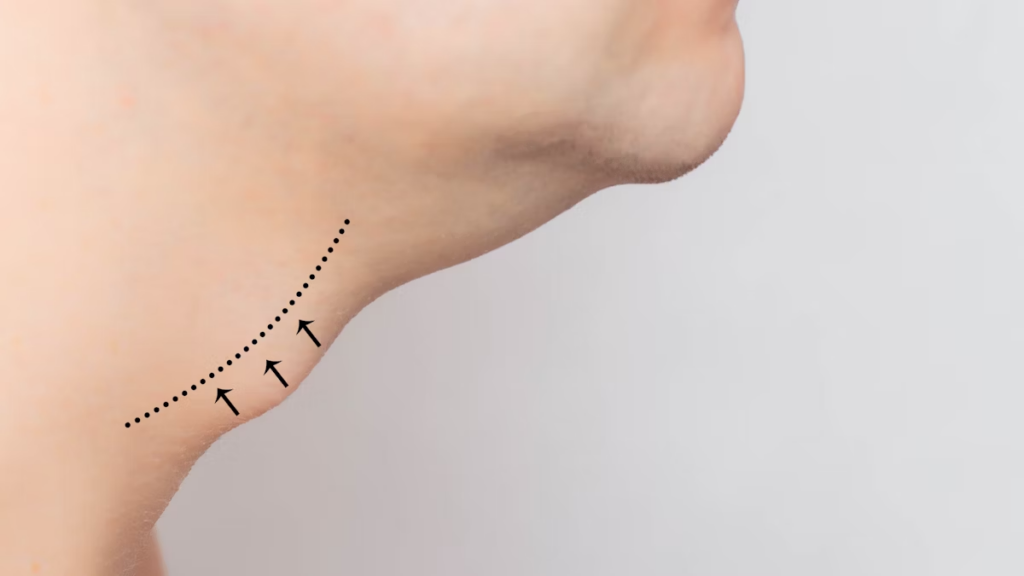Adam’s apple surgery, formally known as chondrolaryngoplasty, is a procedure to reduce the prominence of the thyroid cartilage, commonly known as the Adam’s apple. While primarily a cosmetic procedure, concerns often arise regarding its potential impact on vocal function. This article will explore the relationship between Adam’s apple surgery and voice, examining the procedure itself, the voice box’s function, potential vocal changes, and long-term recovery. There is no net fee associated with this procedure.

Understanding Adam’s Apple Surgery
Adam’s apple surgery is typically performed under general anesthesia. The surgeon makes a small incision in the neck, usually hidden within the natural skin creases. The thyroid cartilage is then accessed, and a portion is carefully removed or reshaped to reduce its prominence. The procedure can be tailored to achieve varying degrees of reduction, depending on the patient’s goals and the surgeon’s assessment. The incision is then closed with sutures, and a small dressing is applied. The average estimated fee for this procedure is between $5,000 and $10,000, but this can vary significantly depending on location and surgeon’s experience.
The recovery period typically involves a few days of discomfort, managed with pain medication. A neck brace may be worn for a short time to provide support. Swelling is common in the initial days and gradually subsides over several weeks. Patients are usually advised to avoid strenuous activities for a few weeks to allow for complete healing. The procedure is considered relatively safe, with minimal risks associated with general anesthesia and surgical intervention. Detailed pre-operative consultations are vital for assessing suitability and managing expectations.
While the procedure aims for minimal scarring, some visible scarring is possible. The degree of scarring depends on individual healing responses and the surgeon’s technique. Careful surgical planning and precise execution are key to minimizing scarring and achieving optimal cosmetic results. Patients should discuss their concerns about scarring with their surgeon during the consultation phase. Post-operative care, including diligent wound management, contributes significantly to minimizing scarring and promoting optimal healing.

The Voice Box and its Function
The voice box, or larynx, is a complex structure located in the neck. It houses the vocal cords, two folds of mucous membrane that vibrate to produce sound when air passes through them from the lungs. The thyroid cartilage, which forms the Adam’s apple, is a crucial part of the larynx’s structure, providing support and protection to the vocal cords. The intricate interplay between the larynx’s muscles and cartilages allows for precise control over vocal pitch, volume, and tone.
The intricate network of muscles and nerves within the larynx enables precise control over vocalization. These muscles adjust the tension and position of the vocal cords, influencing the frequency and intensity of sound production. The delicate balance of these structures is essential for clear and efficient speech. Damage to any part of the larynx can potentially affect vocal quality and function.
Breathing also plays a crucial role in voice production. The lungs provide the airflow necessary to vibrate the vocal cords, creating sound. Adequate breath support is essential for maintaining vocal projection and preventing vocal strain. Respiratory function is closely linked to vocal function; efficient breathing patterns contribute to optimal voice production.
Understanding the complex anatomy and physiology of the larynx is crucial for assessing the potential risks of any surgical intervention, including Adam’s apple surgery. The proximity of the surgical site to the vocal cords necessitates careful surgical technique to minimize the risk of complications affecting vocal function.

Potential Impact on Vocal Quality
While Adam’s apple surgery primarily targets the appearance of the neck, there is a potential, albeit low, risk of affecting vocal quality. The surgery’s proximity to the vocal cords and the delicate nature of the laryngeal structures mean that there’s a possibility of temporary or, in rare cases, permanent changes to the voice. This can manifest as hoarseness, changes in vocal pitch, or difficulty in controlling vocal volume.
The risk of vocal complications is largely dependent on the surgeon’s skill and experience. A highly skilled surgeon with extensive experience in this type of surgery can minimize the risk of complications by employing precise surgical techniques and meticulous attention to detail. Pre-operative assessments, including a thorough evaluation of the patient’s voice, are critical in identifying any pre-existing vocal conditions.
Post-operative vocal rest is crucial to allow the larynx to heal properly and minimize the risk of vocal complications. Patients are usually advised to avoid excessive talking or singing for several weeks after the surgery. Speech therapy may be recommended in some cases to help regain optimal vocal function and address any lingering vocal issues.
The potential for vocal changes should be discussed extensively with the surgeon during the consultation process. Realistic expectations regarding potential vocal outcomes are important to ensure informed consent. Patients should feel comfortable asking questions and expressing their concerns about the potential impact on their voice.
Long-Term Vocal Outcomes and Recovery
In most cases, the long-term vocal outcomes after Adam’s apple surgery are excellent. With proper post-operative care and adherence to the surgeon’s instructions, the majority of patients experience a full recovery of their vocal function. Temporary hoarseness or vocal changes are common in the immediate post-operative period, but these usually resolve within a few weeks.
However, in rare instances, permanent vocal changes can occur. These are usually related to complications during surgery, such as damage to the vocal cords or surrounding tissues. The likelihood of such complications is significantly reduced with experienced surgeons using meticulous surgical techniques. Regular post-operative follow-up appointments are vital for monitoring vocal recovery and addressing any potential issues.
Speech therapy can play a beneficial role in the long-term recovery process. A speech therapist can help patients regain optimal vocal function, improve vocal control, and address any persistent vocal issues. This may involve exercises to strengthen vocal muscles and improve breath support. The duration of speech therapy will vary depending on individual needs and recovery progress.
Long-term success depends on several factors, including the patient’s overall health, adherence to post-operative instructions, and the surgeon’s skill. Open communication between the patient and surgeon is key to ensuring a smooth recovery and achieving optimal vocal outcomes. Regular follow-up appointments allow for early detection and management of any potential complications.
Adam’s apple surgery, while primarily cosmetic, carries a potential, albeit small, risk of affecting vocal quality. The likelihood of vocal complications is significantly reduced by choosing an experienced surgeon, undergoing thorough pre-operative assessment, and adhering to post-operative care instructions. Open communication with the surgeon and a realistic understanding of potential risks and outcomes are crucial for patients considering this procedure. While the average estimated fee is between $5,000 and $10,000, remember that there is no net fee associated with this procedure.
Visit Dr.MFO Instagram profile to see real patient transformations! Get a glimpse of the incredible results achieved through facial feminization surgery and other procedures. The profile showcases before-and-after photos that highlight Dr. MFO’s expertise and artistic vision in creating natural-looking, beautiful outcomes.
Ready to take the next step in your journey? Schedule a free consultation with Dr. MFO ( Best Facial Feminization Surgeon for You) today. During the consultation, you can discuss your goals, ask any questions you may have, and learn more about how Dr. MFO can help you achieve your desired look. Don’t hesitate to take advantage of this free opportunity to explore your options and see if Dr. MFO is the right fit for you.










